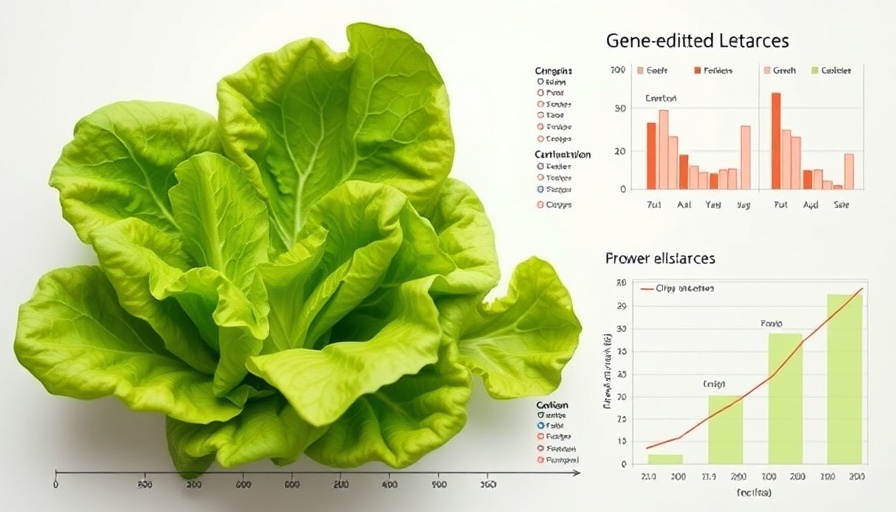
Revolutionizing Nutrition: The Rise of Gene-Edited Lettuce
The nutritional landscape of our food supply is on the brink of a revolution, with gene-edited lettuce paving the way for healthier diets. A research team led by Professor Alexander Vainstein from the Hebrew University of Jerusalem has made significant strides in enhancing the nutritional content of lettuce through CRISPR technology, showing promise in the fight against micronutrient deficiencies.
Addressing Micronutrient Deficiencies Globally
As the global population grows, the issue of malnutrition remains a pressing concern. According to recent studies, around 800 million people globally are malnourished, with a significant proportion suffering from micronutrient deficiencies, including vitamin A, iron, and zinc. This crisis necessitates innovative strategies to improve food quality and availability. The gene-edited lettuce project represents one such solution, providing a more nutrient-rich option that could contribute to addressing these widespread deficiencies.
The Power of CRISPR Technology
CRISPR, a groundbreaking gene-editing technology, allows scientists to make precise changes to an organism's DNA. Unlike traditional genetic modification, CRISPR can enhance specific traits within the plant's own genome without introducing foreign DNA, making it a more accepted approach culturally and ethically. The recent advancements demonstrated by Vainstein’s team highlight the technology's efficiency in increasing vital nutrients such as β-carotene, zeaxanthin, and vitamin C in lettuce.
Simultaneous Nutritional Enhancement
One of the significant achievements of this research is the ability to increase multiple nutritional traits at once through a method that modifies key biochemical pathways in the lettuce. By enhancing β-carotene levels by 2.7 times and achieving a 6.9-fold increase in vitamin C, this lettuce variety stands out as a natural choice for improving public health. These enhancements not only address vitamin deficiencies but also have beneficial effects on overall immune function and health.
Breaking New Ground in Agriculture and Nutritional Science
The potential of gene-edited crops goes beyond lettuce. Similar approaches are being explored across various crops, including rice and tomatoes, to boost their nutritional profiles significantly. Research has shown that CRISPR interventions can lead to remarkable increases in the availability of essential nutrients, which can contribute to food security as well as the health of populations at risk of nutrient deficiencies. Vainstein’s work alongside other global initiatives demonstrates a shift toward sustainable agricultural practices that provide lasting solutions to nutritional challenges.
Future Implications for Food Security
The implications of gene-edited crops for food security are expansive. As climate change and population growth put increasing pressure on our food systems, innovative agricultural techniques like CRISPR promise to meet these challenges head-on by creating more resilient crops with enhanced nutrient profiles. The clear benefits of gene editing suggest that as research progresses, we may see more widespread acceptance and implementation of these technologies in standard farming practices.
Conclusion: A Nutritional Revolution is on the Horizon
With the launch of gene-edited lettuce, we stand at a watershed moment in nutritional science. As this technology becomes more mainstream, it could lead to the development of a wide range of nutrient-dense crops that play a crucial role in combating global malnutrition. However, to fully realize this potential, ongoing research and public acceptance will be vital in enhancing food security and improving global health.
 Add Row
Add Row  Add
Add 




Write A Comment